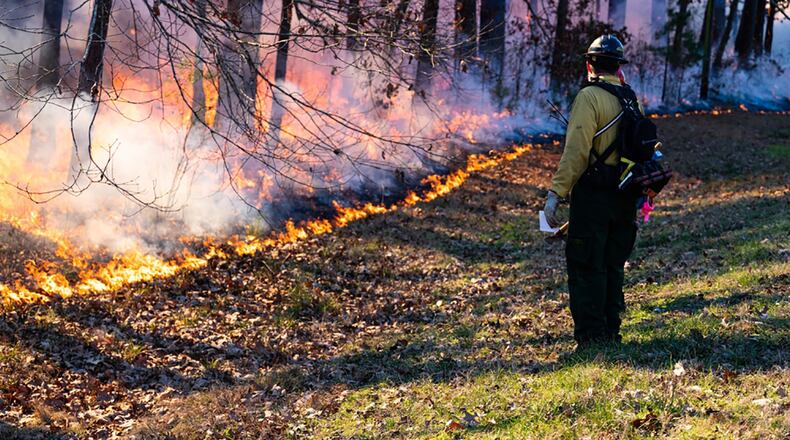“The most important thing we do to protect Air Force installations and communities and allow missions to continue unimpeded is prescribed burning,” said Brett Williams, Eglin AFB Wildland Support Module lead. “We respond to 50-60 wildfires on Eglin every year and you rarely hear about these fires on the news because we have been so aggressive with our application of prescribed burns. When a fire does start, it is easy to manage with no risk to the installation or the community.”
AFCEC established the Wildland Fire Branch in 2012 to ensure an increasing wildfire threat does not impede the Air Force mission. The branch, headquartered at Joint Base San Antonio, Texas, includes nearly 20 teams scattered across the country who are driven by a mission to secure military preparedness through wildfire threat mitigation.
The Wildland Fire Branch responds to hundreds of fires every year, said Bradley Shoemaker, Wildland Fire Branch chief. He said 2021 was an especially active wildfire season with 187 recorded fires on Air Force property. Those fires burned more than 56,000 acres, a number that could have been much higher without the use of wildfire threat mitigation tools like prescribed burns.
“The (prescribed burn) process applies fire to the landscape and creates resilient ecosystems that can withstand fire while also reducing the intensity of fires that burn in those
areas, making them easier to suppress when we have an unwanted ignition,” he said.
Predicting what the 2022 wildfire season might look like is one of the more difficult aspects of wildland fire management, Shoemaker said, because different ecosystems and rapidly changing conditions can alter the course of the season in a matter of moments. Although the future remains a bit unknown, the chief said off-season burns have put suppression resources including fire and emergency services and his teams in a good place to respond and control whatever the 2022 wildfire season brings. “Prescribed burning is the best tool we have to create sustainable lands while reducing the unavoidable threat of wildfires,” he said.
About the Author

